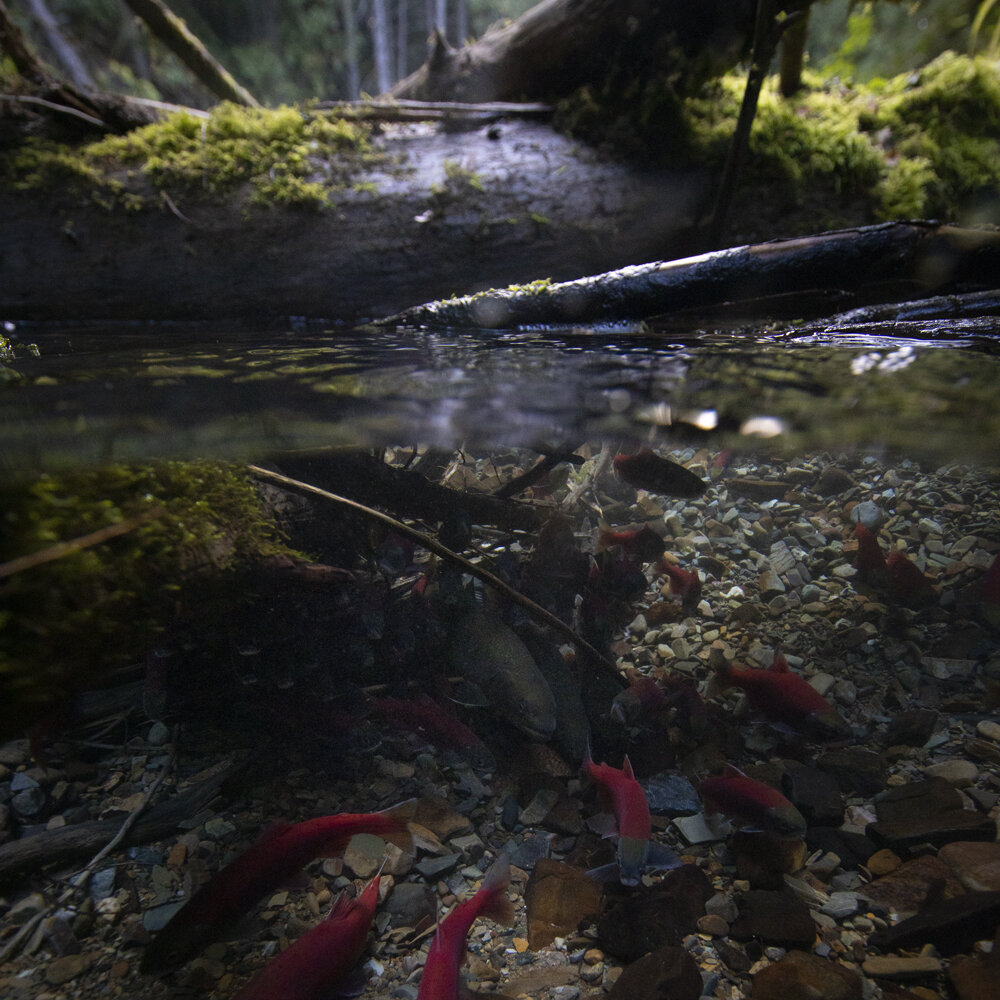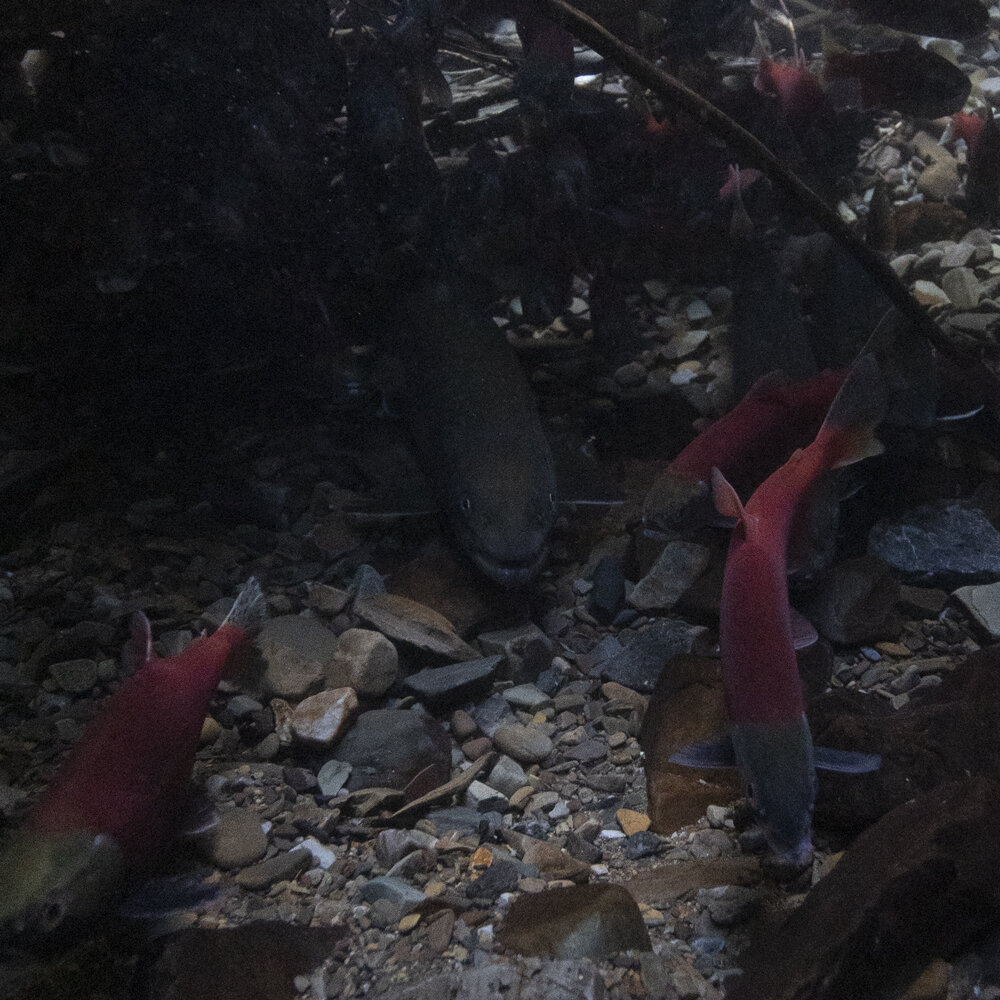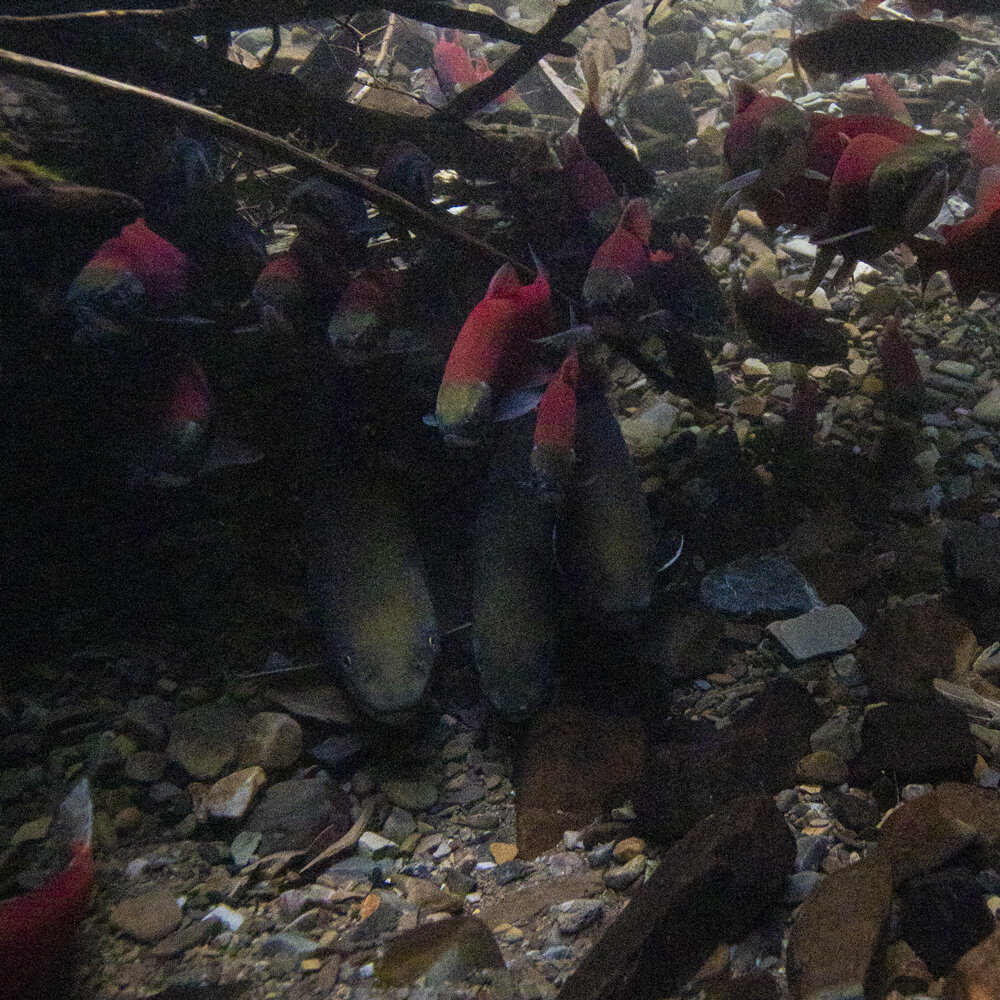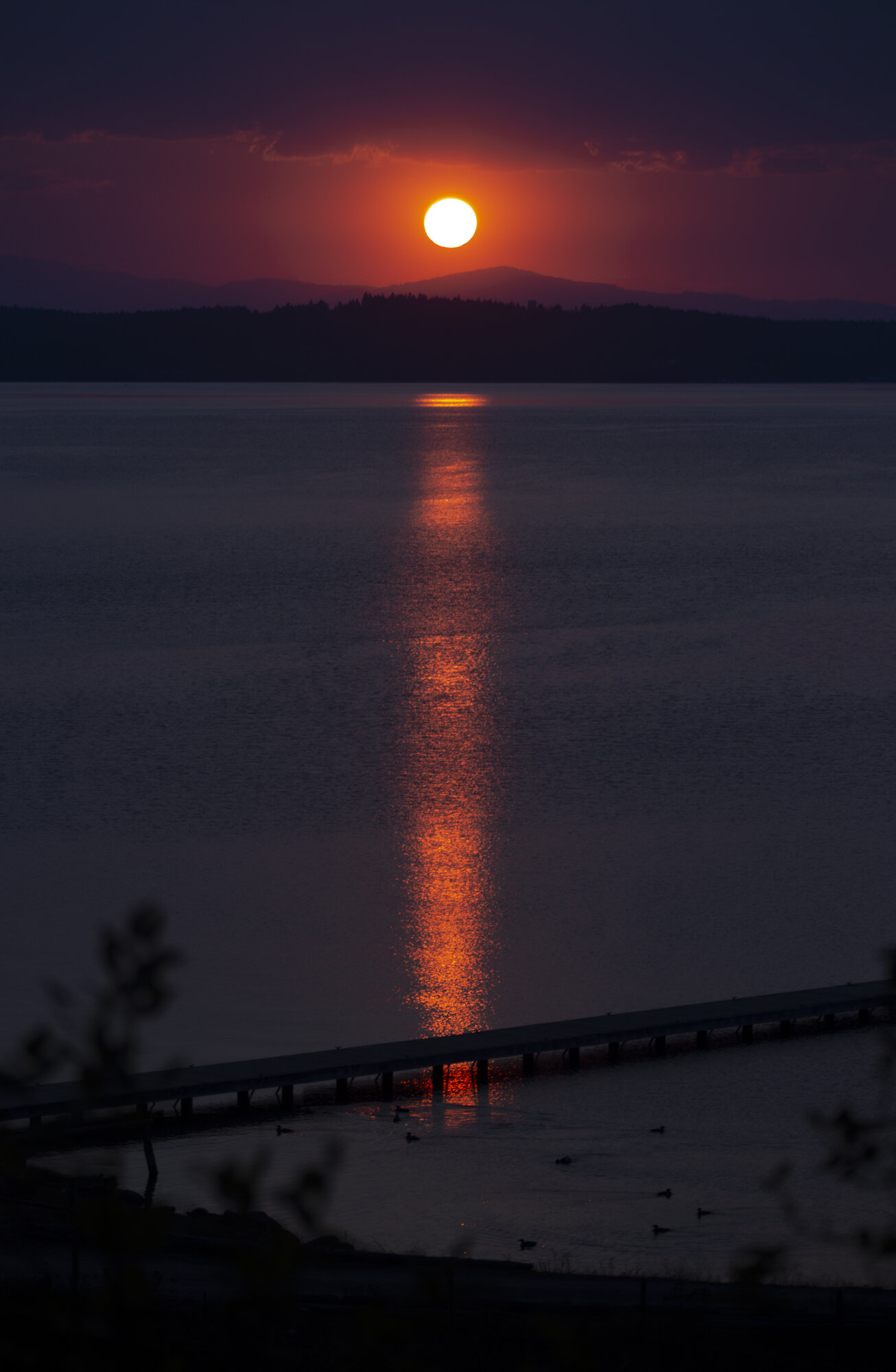As we stumbled down a cliff in late September, I heard Emily gasp. When I saw she hadn’t slipped, my eyes shot up and darted left to right, fearing we’d disturbed a bear. But along the water, a blur of brown and white snaked through the trees. A bald eagle. The bird looked prehistoric as it glided away from us through the skinny but steep gully we had hiked into, his wings spanning the width of the creek itself. I imagine he wasn’t very happy we had intruded on his favorite fishing spot, but we were both searching for the same thing. Kokanee Salmon.
For years, I’d seen clips posted by locals in Facebook groups of these bright red salmon. The fish seemed to trek stubbornly up-stream with no regard for the photographer dipping their phone into the water for a closer look. My Ikelite underwater housing immediately came to mind and I became determined to document these strange creatures. But first, I had to find them.
When asked where to watch the “salmon run”, most local people online said you could see them “next to my huckleberry picking spot” or “my favorite elk hunting spot”. In Idaho, this is considered a polite way to say “f*** off”. With not much help from the locals, I realized I didn’t know much about these fish at all and decided to do some research.
Kokanee Salmon
I’ll make this quick, but salmon are the most badass fish in the world. These specific salmon are split into two groups with interchangeable names, but for sake of this post, we’ll refer to the freshwater salmon as kokanee and the original saltwater salmon as sockeye. Sockeye salmon are anadromous, meaning they migrate from the sea, up creeks and rivers into freshwater to spawn (lay and fertilize eggs). The longest sockeye migration is from the Pacific Ocean to Redfish Lake, right here in Idaho. That’s 1000 miles and over 6,500 feet of elevation gain…all upstream. After spawning, the salmon die and the newborns hatch and grow for a few years before returning to the ocean. Kokanee Salmon have a similar journey, though not quite as extreme. Kokanee spend most of their lives in freshwater lakes, and migrate up the rivers, creeks and inlets to spawn.
This journey is a hard one. The salmon rarely stop to eat along the way, and, as a result, their bodies completely break down. A cocktail of hormones and resource depletion causes their appearance to change dramatically. Their skin changes from silver to a bright red, and then slowly starts to completely rot away. Their jaw deforms into a hook shape. Muscles soften from the constant barrage of water and slowly start to fail. But for some, even death is not the end of their journey. Studies have shown that the salmon’s body is so well adapted to swimming upstream, that even once a salmon has died, it’s body can continue swimming in place for quite some time, their tail moving back and forth with the current of the river. The salmon exhibit one of the most extreme examples of animal instinct.
Seeing Red
After some research, we scoured Google Maps and drove down a few forest roads, looking for the ideal inlet. For some reason, we didn’t take Rex the Van, so we eventually had to pull off and walk because the road was getting a bit too bumpy. We walked up a hill, bushwhacked down the other side, and that’s when we saw our bald eagle friend I mentioned earlier. As we approached the river, my excitement peaked. I spotted a few flashes of red in the water. I put my phone under for a closer look. We also saw where our eagle friend was previously eating lunch and, if you look close, you can see a few salmon eggs he left behind.
I’m not sure why I assumed my phone was waterproof, but it definitely was not. It started acting weird and just decided to turn off on it’s own. Luckily I was able to get the photos off before it completely died once I got home, but at least we had found what we were looking for! Emily and I came back a few days later with the van and a camera that was MEANT to go in the water.
The dome on my housing fogged up in the shape of a heart, so I took a picture of Emily
A small waterfall trickles over a log jam above hundreds of salmon
Under one particular log, amidst the hundreds of salmon, I saw a different creature. In my viewfinder, it looked darker and much more round than the others. I nearly mistook it for an eel, but saw glimpses of a tail and dorsal fins. After returning from the trip, I discovered that it was a bull trout. As if the salmon don’t have it hard enough with the eagles and the journey itself, bull trout often lay in wait for the smaller kokanee to show signs of weakness and make a quick meal out of them. For some reason they creeped me out.



I took a break from shooting and listened to the river. This was a special place, in the most honest sense of the word. The instinct and rituals of these creatures date farther back than any of us. And witnessing it along the bank of this whispering creek was an experience I’ll always remember.
Me with my dad’s waders and my underwater housing
My honey on a log overlooking the salmon freeway
We sat for hours, and would’ve stayed longer, but it was getting late and we didn’t want to hike out in the dark. We said farewell to the salmon, knowing even if we came back the next day, the ones we’d become acquainted with would most likely be miles upstream.
Sunset was gorgeous due to some local fires and we took a few snapshots before driving the long dirt road home.
Thanks for reading!




